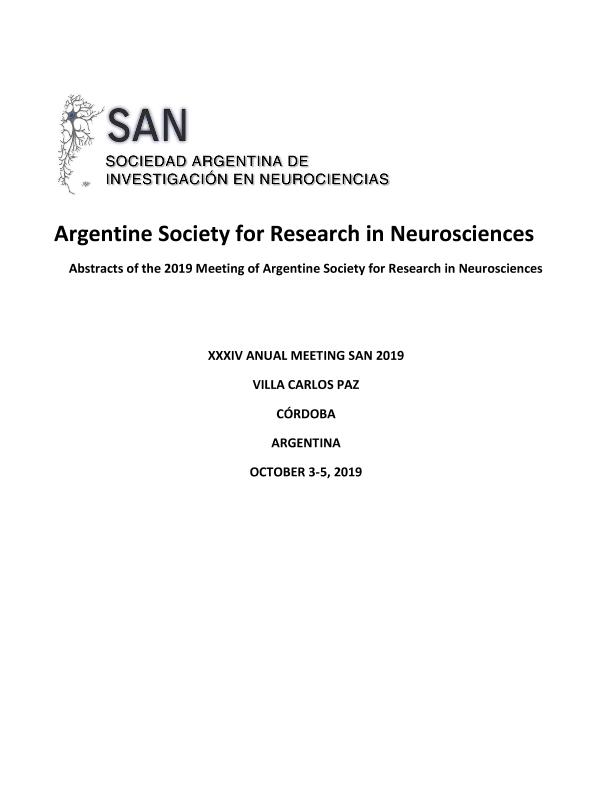Evento
Neural modulation of systemic stress response requires the insulin like-peptide INS-3 in C. elegans
Tipo del evento:
Congreso
Nombre del evento:
XXXIV Reunión Anual de la Sociedad Argentina de Investigación en Neurociencias
Fecha del evento:
03/10/2019
Institución Organizadora:
Sociedad Argentina de Investigación en Neurociencias;
Título del Libro:
Abstracts of the 2019 Meeting of Argentine Society for Research in Neurosciences
Editorial:
Sociedad Argentina de Investigación en Neurociencias
Idioma:
Inglés
Clasificación temática:
Resumen
Perpetuation of the flight response inhibits defensive cytoprotective mechanisms, leading to early onset of age-related disorders from invertebrates to mammals. We have recently shown that, in C. elegans, the flight response induces neuronal release of Tyramine (TA, invertebrate analog of adrenaline), that stimulates the adrenergic-like receptor TYRA-3 in the intestine. This leads to the activation of the DAF-2/Insulin/IGF-1 pathway in non-intestinal cells and the inhibition of cytoprotective mechanisms. However, the signals that link the activation of TYRA-3 in the intestine with the DAF-2 insulin receptor in other tissues is unknown. We, therefore, performed a screening of Insulin like-peptides expressed in the intestine by RNAi and identified that lack of ins-3 improves resistance to oxidative and thermal stress. This resistant phenotype cannot be reversed by exogenous TA and it is mediated, at least partially, by DAF-16/FOXO. Moreover, by using genetics we found that tyra-3 and ins-3 act in the same pathway. In addition, we found that only the intestinal rescue of ins-3 null mutants was able to restore the resistance to wild-type levels. We propose that INS-3 could be the signal molecule that connects the intestine, where TA receptor is expressed, with distal tissues. Given the high degree of conservation of fundamental mechanisms, this work can contribute to the understanding of neurohormonal coordination of stress responses in animals.
Palabras clave:
c elegans
,
Insulin
,
stress
Archivos asociados
Licencia
Identificadores
Colecciones
Eventos(INIBIBB)
Eventos de INST.DE INVEST.BIOQUIMICAS BAHIA BLANCA (I)
Eventos de INST.DE INVEST.BIOQUIMICAS BAHIA BLANCA (I)
Citación
Neural modulation of systemic stress response requires the insulin like-peptide INS-3 in C. elegans; XXXIV Reunión Anual de la Sociedad Argentina de Investigación en Neurociencias; Villa Carlos Paz; Argentina; 2019; 150-150
Compartir




